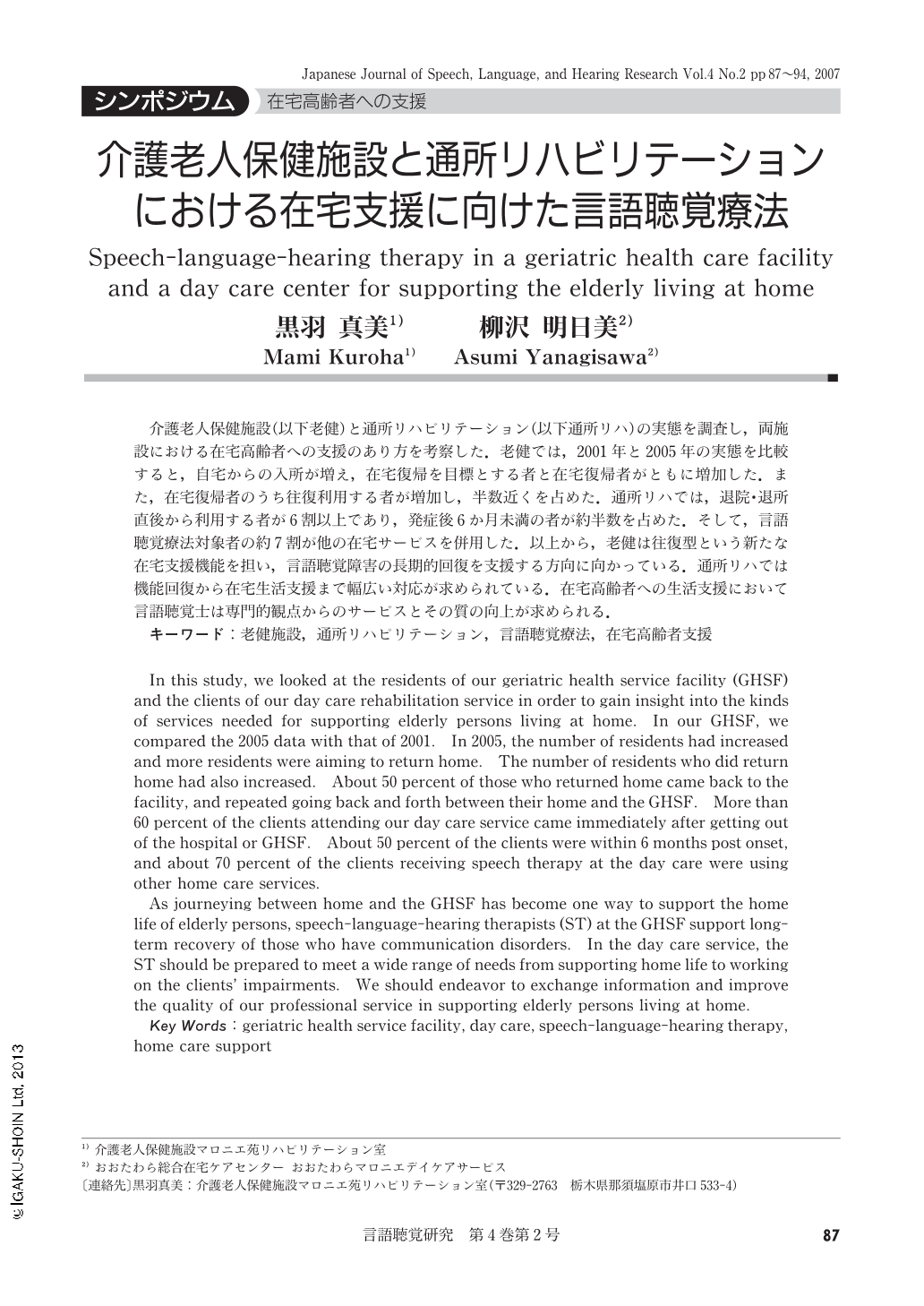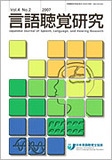Japanese
English
- 有料閲覧
- Abstract 文献概要
- 1ページ目 Look Inside
- 参考文献 Reference
- サイト内被引用 Cited by
介護老人保健施設(以下老健)と通所リハビリテーション(以下通所リハ)の実態を調査し,両施設における在宅高齢者への支援のあり方を考察した.老健では,2001年と2005年の実態を比較すると,自宅からの入所が増え,在宅復帰を目標とする者と在宅復帰者がともに増加した.また,在宅復帰者のうち往復利用する者が増加し,半数近くを占めた.通所リハでは,退院・退所直後から利用する者が6割以上であり,発症後6か月未満の者が約半数を占めた.そして,言語聴覚療法対象者の約7割が他の在宅サービスを併用した.以上から,老健は往復型という新たな在宅支援機能を担い,言語聴覚障害の長期的回復を支援する方向に向かっている.通所リハでは機能回復から在宅生活支援まで幅広い対応が求められている.在宅高齢者への生活支援において言語聴覚士は専門的観点からのサービスとその質の向上が求められる.
In this study, we looked at the residents of our geriatric health service facility (GHSF) and the clients of our day care rehabilitation service in order to gain insight into the kinds of services needed for supporting elderly persons living at home. In our GHSF, we compared the 2005 data with that of 2001. In 2005, the number of residents had increased and more residents were aiming to return home. The number of residents who did return home had also increased. About 50 percent of those who returned home came back to the facility, and repeated going back and forth between their home and the GHSF. More than 60 percent of the clients attending our day care service came immediately after getting out of the hospital or GHSF. About 50 percent of the clients were within 6 months post onset, and about 70 percent of the clients receiving speech therapy at the day care were using other home care services.
As journeying between home and the GHSF has become one way to support the home life of elderly persons, speech-language-hearing therapists (ST) at the GHSF support long-term recovery of those who have communication disorders. In the day care service, the ST should be prepared to meet a wide range of needs from supporting home life to working on the clients' impairments. We should endeavor to exchange information and improve the quality of our professional service in supporting elderly persons living at home.

Copyright © 2007, Japanese Association of Speech-Language-Hearing Therapists. All rights reserved.


